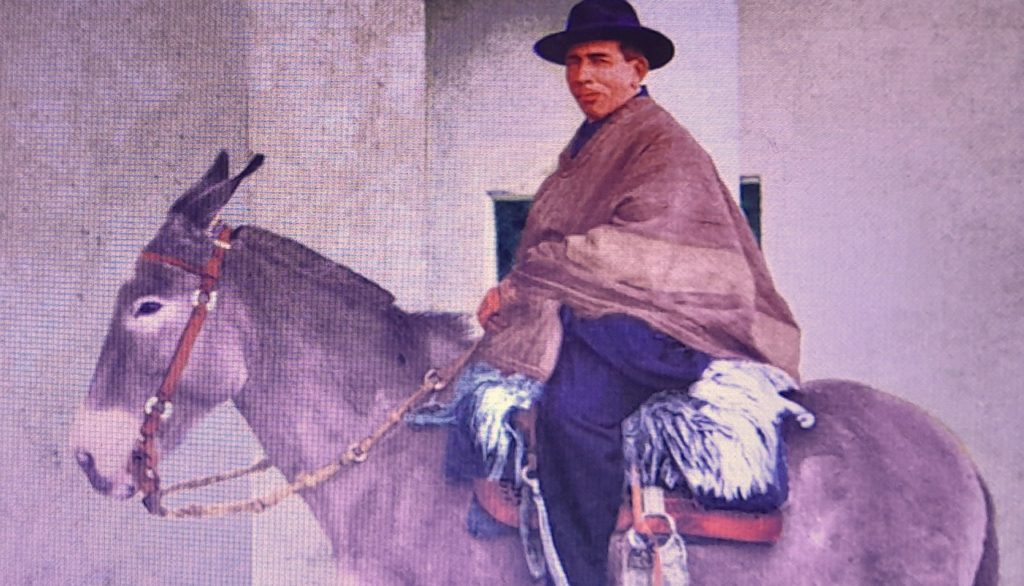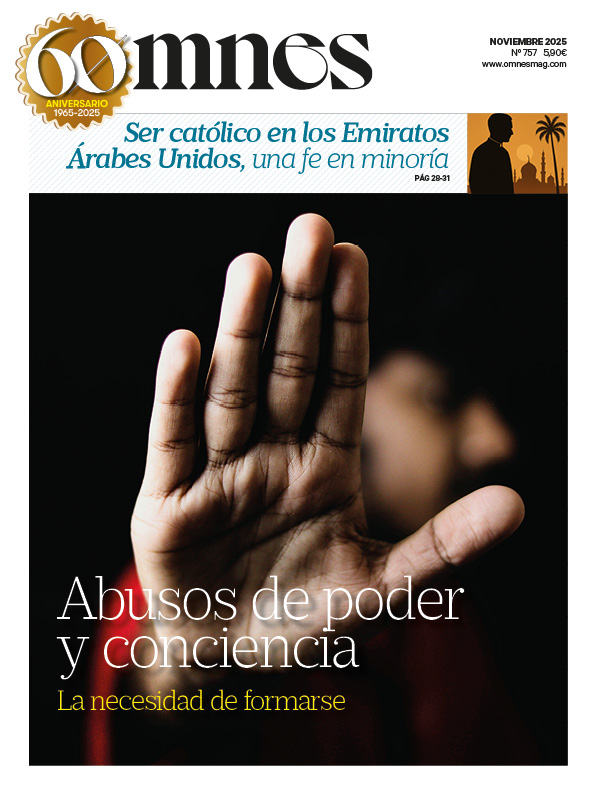The priest Saint José Gabriel Brochero is the first canonized saint who was born, lived and died in Argentina. He is popularly known as the "Cura Brochero". He was born on March 16, 1840. The following day he was baptized. His family was composed of parents who worked hard rural jobs, which would not be an obstacle for them to form a brilliant large family faithful to the Catholic Faith, austere to the extreme and composed of ten children, one of whom would become a priest (José Gabriel Brochero) and two of the faithful religious women of the Congregation of the Sisters of the Orchard.
He died of leprosy on January 26, 1914. The disease lasted for many years, and "devoured" him little by little. He had contracted it as a result of his persevering assistance to an old man suffering from the disease, in spite of all the warnings he was given. He did not want to abandon him, since he was aware that he was the only person who visited him. His feast day is celebrated every year on March 16. He was beatified on September 14, 2013 and canonized on October 16, 2016.
His priestly ministry
Regarding his priestly work, on November 4, 1866 he was ordained priest in the Cathedral of Córdoba (Argentina). The following year he showed his priestly guts by standing out for his courageous generosity in assisting the sick and dying during the cholera epidemic that struck the city of Cordoba in 1867, killing a significant percentage of the population (2,300 people out of some 30,000).
At the end of 1869, the bishop entrusted him with the extensive "Curato" of San Alberto: ten thousand inhabitants scattered in desert and mountainous areas, across 4,336 square kilometers, in an area cut off by the interposition of the "Sierras Grandes", a 2,200 meters high stone massif, whose traverse, although not very high, was very dangerous and inhospitable, which is why it was isolated from the most civilized places.
In his "Curato" the places were distant, and there were almost no roads or schools. In addition, the moral state and material destitution of its inhabitants was lamentable. Nevertheless, Brochero's apostolic heart turned that area into a center of spirituality and a flourishing productive zone.
The seat of the Curato was called "Villa del Tránsito" (today "Cura Brochero"), it consisted of only twelve precarious houses, with no services whatsoever. In that place illiteracy, concubinage, alcoholism, theft and poverty were raging, to which was added the absolute lack of religious instruction and the lack of sacraments.
The Cura Brochero, aware that the state authorities of the provincial capital would not show any interest in those abandoned places, understood that if he did not organize the population so that they would raise their own human dignity, he could not preach the Gospel effectively; Therefore, with remarkable spiritual, sacramental and moral leadership, he organized the inhabitants in teams to build chapels and schools, to lay out roads in rocky and steep places, and to open irrigation ditches that would bring water from the mountain rivers to the crops, transforming the area into an orchard.
Many of these works still survive today, and among them is the "Camino de las Altas Cumbres", which was used in international rally competitions.
On muleback
Unlike the holy Curé of Ars, whom the Holy Spirit impelled to develop a notable "static" pastoral ministry, centered on confessions and preaching to the faithful, Cura Brochero was impelled by the Holy Spirit to the "dynamic" task of parish ministry, For this reason, on the back of a mule, he traveled thousands of kilometers ("thousands" in the literal sense) to visit all his parishioners and bring them the Faith, consolation and the sacraments, bearing cruel wounds on his incurably wounded backside.
One day he understood that his efforts would never bear solid spiritual fruit if he did not achieve the profound conversion of the souls entrusted to him; and he also understood that the only way to convert so many poor and abandoned people was to make them participate, "everyone" (and especially the illiterate, concubines, alcoholics, bandits persecuted by the law, etc.), in batches of spiritual exercises of at least eight days (with less than eight, he considered that "nothing serious" could be done).
In those batches there were four days dedicated to formation in basic Christian doctrine, and another four to the prayer life itself.
In pursuit of this goal, he built a huge retreat house on the site of his parish, which was almost abandoned. Although all his parishioners considered the proposal crazy, it was done: they say that there is no holiness without some magnanimity.
It was built in a short time, and in the first year of use alone, a total of 2,240 retreatants (adding together the men's and women's groups) participated in those spiritual exercises in a "mysterious" way. Anyone who knows the place today would find no human explanation for this fact. And this practice remained firm, in that unpopulated area, from 1877 to 1914 (the year of his death). There were exercise batches of up to 900 participants.
If we take into account that in those years there was no radio, no TV, no WhatsApp, no social networks, and no freezerSince there were no refrigerators, no cold food chains, no gas, no drinking water, and the means of transportation were on foot or blood traction, there is no doubt that the breath of the Holy Spirit in that place, and the correspondence to the grace of the saintly priest, were two undoubted realities.
His faith, as Jesus Christ asked us to do, was capable of "bring forth children of Abraham from the very stones". (Matthew 3:9). On the other hand, the population of the place where the retreat house was built was only a hundred people, so that the rest of the retreatants had to go out to isolated and distant areas, which made success completely inexplicable without the action of the Spirit and the correspondence to grace.
The most important lesson he gave us priests can be summarized as follows (these are not his words): "To convert the ignorant and the rude: Eight days of retreats... at least!" He was a great promoter of popular spiritual retreats for simple people, and also a great inspirer of those parish priests who consider it fundamental to have retreat houses in their own parish: no more making spiritual retreats depend on the free availability of dates in other retreat houses!
To all that has been said, we must add the countless number of anecdotes collected that reflect his good humor, his trust in grace, his faith in the need for the sacraments, and the importance of human promotion as a basis for the action of the Holy Spirit; these anecdotes are inexhaustible and very interesting, but brevity prevents us from presenting them.
His death
When he died he was seventy-three years old. The last part of his life he was blind and very deaf, and abandoned by almost everyone... because of the panic of leprosy, which chilled good feelings. Let us remember that if today we are afraid of the "coronavirus"... how much more was the fear of leprosy then!
He died with all the sacraments, enduring severe pain. They buried him four meters deep in the chapel of the retreat house, and covered the coffin with quicklime, after which they burned all his belongings, except the parish books.
Today those books that record his living faith in the sacraments survive, proof of which is the immeasurable number of people he served, as well as the silent fruits that persevere in that area which he extracted from geographical abandonment and spiritual poverty, which is why all its inhabitants (believers or not, Catholics or anti-Catholics) unanimously esteem him as a historic leader in all areas: human, spiritual, moral and religious.
In the area where he carried out his ministry, it is said that the priest Brochero, as a priestly image of Christ, is worthy of a fame and affection that have made him an "untouchable", a worthy title for one who consumed his life as do the candles that worship God the Father on the altar.
Distinguished Argentine folklorists honored Cura Brochero with a beautiful song, which can be heard below, "A step here a stride there", that summarizes his life very well.
Santa Fe, Argentina








